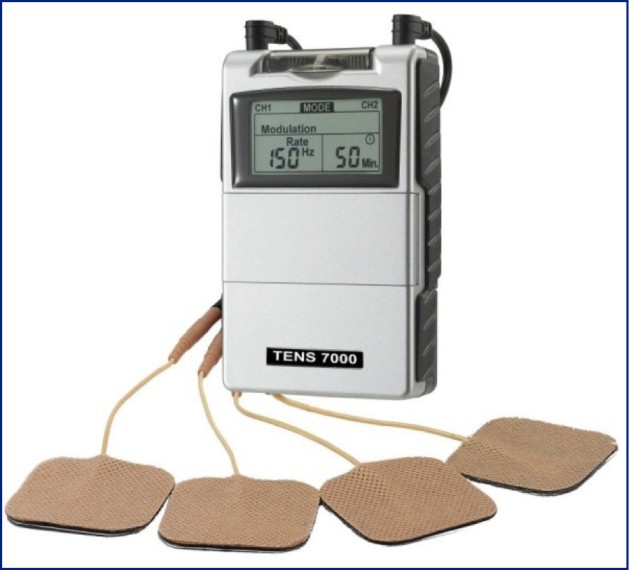
TENS
What does TENS feel like?
When the machine is switched on you feel a prickling or pins and needles sensation.
You can walk around with the TENS machine attached and can carry on doing most of your normal activities with it on, but with the benefit of pain relief. You can’t drive and operate machinery with it switched on though because it could be a distraction.
How does TENS work?
TENS provides pain relief via two mechanisms:
1. Blocking pain.
Put simply because your nerves are busy conducting the pins and needles sensation so they cannot conduct the pain. This is called the pain gate theory.
2. Production of endorphins.
TENS stimulates the body to increase its production of endorphins which are the body’s natural painkiller. This is why TENS can continue to give pain relief even once the machine has been taken off.
What is a TENS machine used for?
TENS is used for pain relief. It is particularly useful for chronic pain – this is pain that you have had for several months or more. It is often effective in giving pain relief in arthritis and mechanical back pain.
TENS is a help in controlling labour pains, but you need a specific sort of TENS machine which has a button to press to give a surge of pins and needles when each contraction starts.
When should I not use a TENS machine?
TENS has very few side effects but should not be used in the following circumstances:
Pregnancy. TENS is an effective pain relief during labour, but should only be used during earlier stages of pregnancy if advised by a physiotherapist, midwife or medical practioner.
Over broken or irritated skin.
When driving or operating machinery you may be distracted.
On the head, face or front of the neck unless advised otherwise
Over areas that are numb or have decreased sensation.
If you have a pacemaker. Some pacemakers can be affected by the electrical current of a TENS machine. Take advice from a physiotherapist or medical practioner before using a TENS machine if you have a pacemaker fitted.
Cancer. TENS can be very useful in the treatment of pain associated with cancer, but take medical advice first.
Can I use a TENS machine whilst also taking painkillers?
Yes – because TENS works by increasing your level of endorphins it is safe to use TENS whilst taking your normal painkillers
Can I overdose on TENS?
No. Use the TENS as much as you need to. If you are going to have the TENS on for a long period of time it is best to get a machine with a burst or modulated setting- this stops the body from getting used to the sensation such that the TENS becomes less effective.
You also need to keep an eye on your skin and move the electrodes slightly each time you use the machine so your skin doesn’t get irritated
What features should I look for on a TENS machine?
If you decide to purchase a TENS the jargon can be a bit off putting. Here is an explanation of some of the terminology you will see:
Dual channel/ single channel:
Dual channel machines have four electrodes, single channel have two. Dual channel is useful if you are putting it on a large area, for instance a back, or if you want to treat two distinct areas, for instance you want to put two electrodes on the bottom of your back and two on the back of your leg where you are getting referred pain. Single channel machines are useful if you are treating a small area such as an elbow. A dual channel machine can often be operated on one channel only ie it can act as a dual or single channel.
Pulse rate/ pulse frequency:
The pulse rate/ frequency of the stimulation effect the action of the machine. Low frequencies 2 – 5 Hz stimualte endorphin production. Higher pulse rates of 90 – 130 hz stimualte the pain gate mechanism (Proff Tim Watson University of Hertfordshire) It is best to get a machine where you can vary the pulse rate then try it out on different pulse rates and see which gives you the best pain relief.
Burst or modulation settings:
Once the TENS has been on for a while the body gets used to it or adapts and the TENS becomes less effective. If a burst or modualtion mode is on a machine the pulse frequency will change periodically reducing this adaption effect.
Read more news from our Physiotheraphy section.